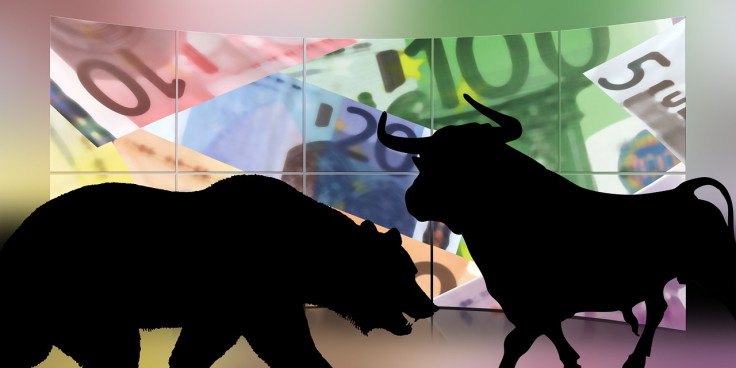Why October Has a Reputation for Market Turbulence — and What the Data Really Says
October's reputation for market chaos is legendary—but does the data support the fear or debunk the myth?

Every October, traders brace for turmoil. From Wall Street's 1929 collapse to Black Monday 1987, the month has long been branded the 'jinx' of global markets.
Yet, modern data paints a more nuanced picture: while volatility spikes in October, it doesn't necessarily spell disaster. Instead, the month's dark legend reveals as much about investor psychology as it does about market mechanics.
A Legacy of Historic Crashes
The roots of October's uneasy fame run deep. On 24 October 1929, known as Black Thursday, the US stock market began its descent into the Great Depression. Just days later, Black Tuesday saw even more dramatic losses.
Fast forward to 19 October 1987 (Black Monday), and the Dow Jones Industrial Average suffered a staggering 22.6% drop in a single day, marking the largest one-day percentage decline in history.
These events have firmly established October's reputation as a period of financial instability. Although the underlying causes of each crash varied, ranging from speculative excess in 1929 to the rise of automated programme trading in 1987, their shared timing has contributed to a widespread perception that October poses heightened risks for equity markets.
What the Volatility Index Reveals

October has long been recognised as the most volatile month for equities. According to research from LPL Financial, the S&P 500 has experienced more daily swings of 1% or greater in October than in any other month since 1950.
This heightened activity is often attributed, in part, to the timing of US midterm and presidential elections, which typically occur in early November every other year and can introduce political uncertainty into markets.
In 2025, that uncertainty is compounded by an ongoing US government shutdown, with no resolution yet in sight. The shutdown has already disrupted federal operations and delayed key economic data releases, adding a layer of opacity to investor decision-making and fuelling concerns about fiscal dysfunction.
While September historically records more negative returns on average, October's reputation for turbulence is reinforced by its association with several major market crashes. These include the Panic of 1907, Black Tuesday, Black Thursday, and Black Monday in 1929, as well as the dramatic collapse on Black Monday in 1987.
Interestingly, the triggers for both the 1907 panic and the 1929 crash emerged in September or earlier. However, the most severe market reactions were delayed until October, further cementing the month's reputation as a flashpoint for financial instability.
Seasonal Patterns and Investor Psychology
Behavioural finance offers one explanation for October's reputation. Investors may be more prone to panic during this month due to its historical baggage, creating a self-fulfilling prophecy. This phenomenon is compounded by media coverage that tends to amplify fears around anniversaries of past crashes.
Yet, data from the Federal Reserve Bank of St. Louis suggests that while October is more volatile than average, it is not the worst-performing month in terms of returns. According to Visual Capitalist, which compiled S&P 500 monthly performance data from 1950 using YCharts:
- September has the lowest average return at -0.72%, making it the weakest month historically for US equities.
- October shows an average return of +0.91%, indicating modest gains despite its reputation for volatility.
- November and December have historically strong performances, averaging +1.82% and +1.49% respectively.
These figures challenge the notion that October is uniquely dangerous. While the month is indeed volatile, it does not consistently produce negative returns. It is often followed by stronger performances in November and December, implying that perception may not always align with reality.
Modern Safeguards and Market Resilience
Today's financial markets are equipped with tools that didn't exist in 1929 or 1987. Circuit breakers, improved risk modelling, and diversified portfolios have made markets more resilient to sudden shocks. Moreover, central banks now play a more active role in stabilising markets during periods of stress.
In 2025, investors will navigate a complex landscape marked by inflation concerns, interest rate uncertainty, and geopolitical instability. These factors contribute to volatility, but they are not confined to October. The timing of market swings often depends more on macroeconomic developments than on the calendar.
The Verdict: Myth or Reality?
So, is October truly cursed? The answer lies somewhere in between. While historical crashes have given the month a dark reputation, the data does not conclusively support the idea that October is uniquely perilous.
Volatility tends to rise, but returns are not consistently negative. Investor psychology, media narratives, and seasonal patterns all play a role in shaping perceptions.
For long-term investors, the lesson is clear: don't let calendar myths dictate your strategy. Diversification, discipline, and a focus on fundamentals remain the best defences against short-term turbulence. October may be dramatic, but it's rarely decisive.
© Copyright IBTimes 2025. All rights reserved.





















